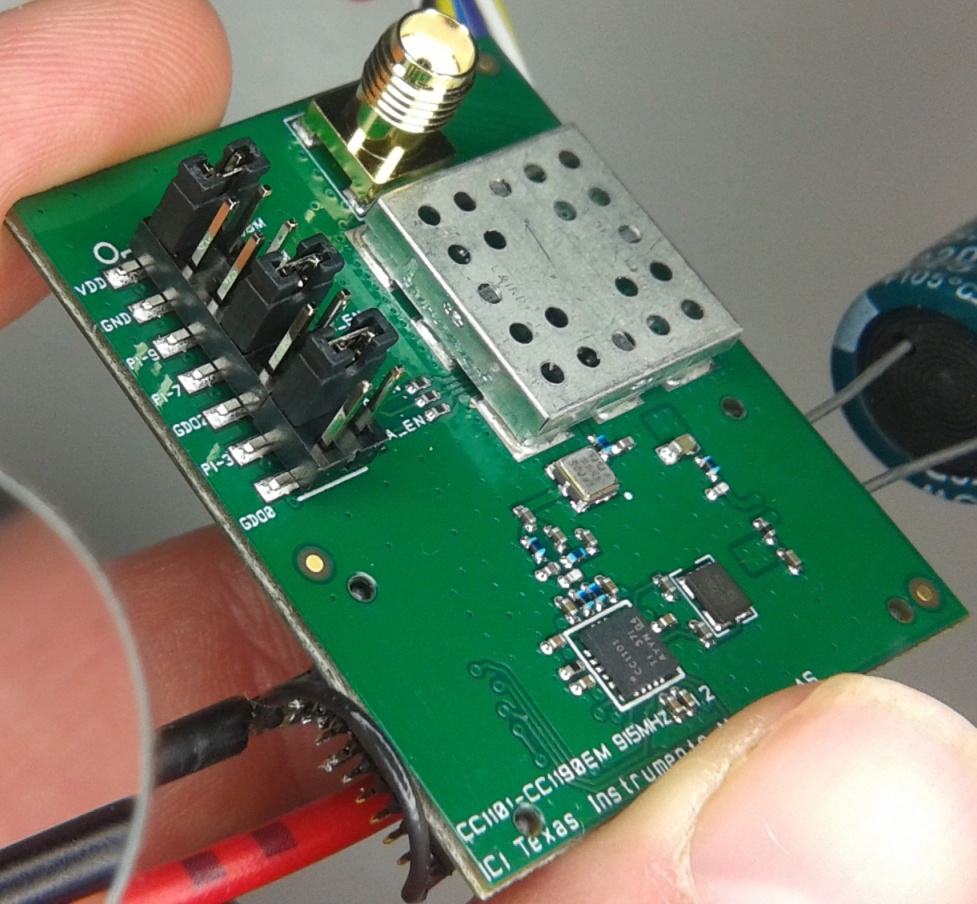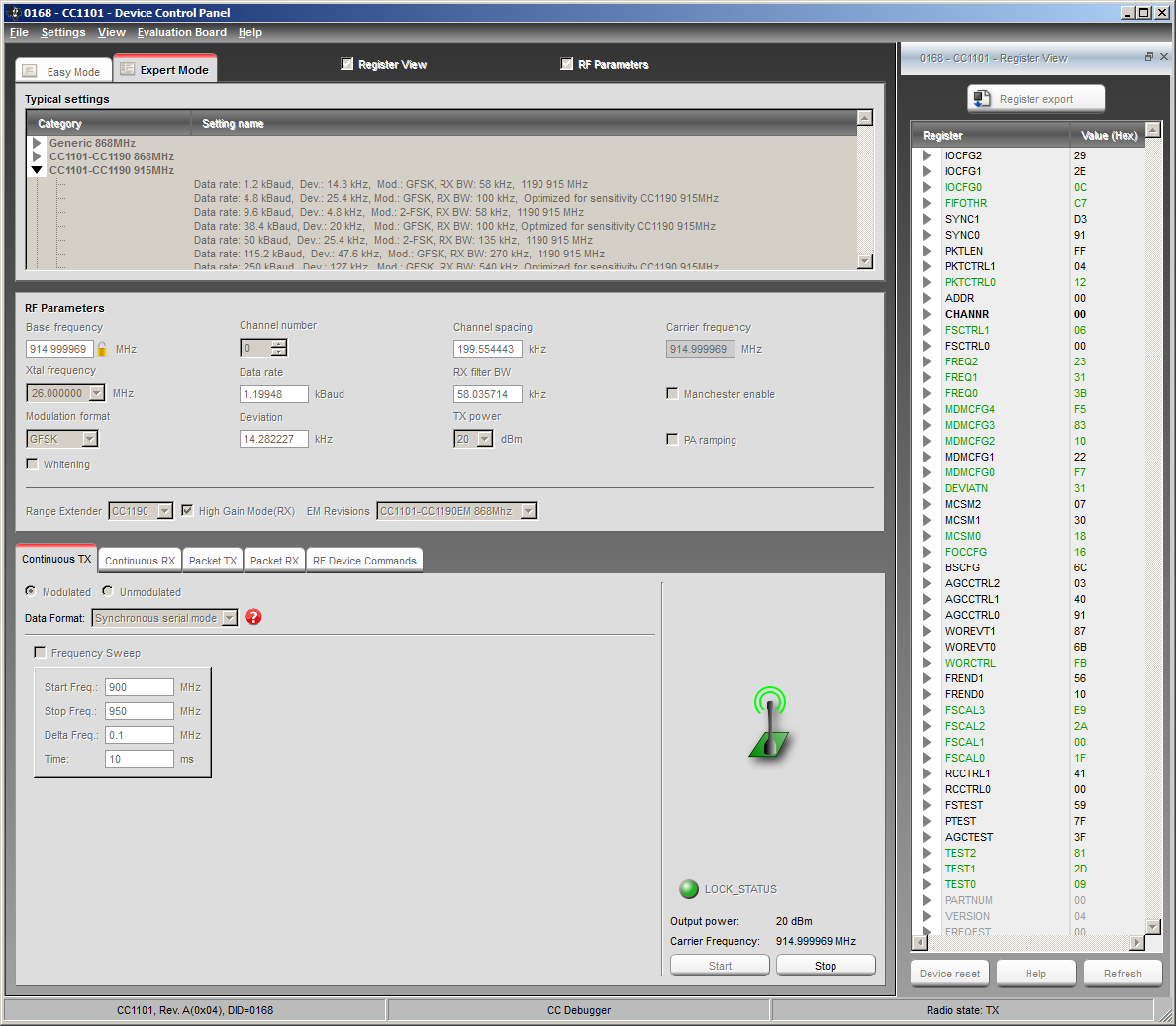I have recently purchased CC1101CC1190EMK915 evaluation board for CC1101 and CC1190 at 915MHz band.
I am using an XMEGA-A3BU Xplained demo board to talk to the RF board for evaluation purposes (should not impact these observations).
During initial testing, I was only able to achieve 300m max range from the units using simple low bit-rate data transmission (using values from smartRF studio). This seemed curious since these units should be able to provide km's of range (so I hear). To investigate further, I connected the RF output of the eval board to my RF Explorer and set the CC1101 to transmit a continuous wave (OOK with both on and off set to same power level - as per smartRF studio).
The CC1101-CC1190 eval board is connected to it's own power supply capable of supplying 5A with thick (2mm^2) wires. Both positive and all three ground terminals are connected from connectors P1 & P2. Connection to XMEGA via SPI port and two independent GPIO's for PA/LNA control. I have verified the SPI communication and ability to set registers in the CC1101. Operation of PA and LNA have also been confirmed. The rectangular box on top of the RFexplorer provides 6dB of attenuation which is accounted for with internal settings.
I then took peak readings for a range of RF output powers (set in PATABLE registers), however I was not able to produce any more than approx -8dBm. Adjusting the PATABLE settings from -20dB to +5dB (output of CC1101 - input to CC1190) only varied this maximum power by about 2-3dBm??? Therefore I can see that the full power is not being delivered properly. Interestingly, the power consumption of the device actually matched closely to the datasheet during these tests (90mA - 260mA) with higher power settings drawing higher currents. So where is this power going?
When we look at these plots, it can be seen that the peak amplitude varies very little, but the bandwidth (frequency spread of the transmitted signal) increases with higher powers. So it looks like the energy is not being "focused" into the centre frequency, but rather just spreading out sideways.
PATABLE 0x0E -20dBm
PATABLE 0x8E 0dBm
To be honest, both of the above plots seem to consume too much bandwidth.
Can anyone suggest why this may be occurring and how to resolve it to produce higher output power and range?











